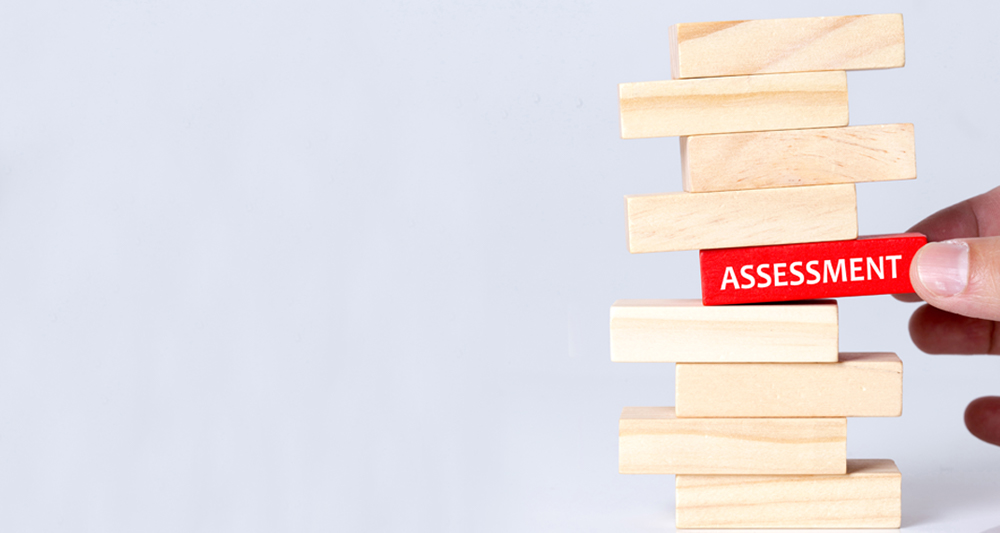How to Assess Strengths and Personality Assessments for Business

November 7, 2019 | By Stephen Caldwell
Who are you?
If you showed up for a philosophy class, you wouldn’t be shocked if someone asked that question and expected an answer that went much deeper than giving them your name and job title. But questions about who you really are – things like what motivates you, what you value, why you behave in certain ways, and what qualities you possess and how you use them – also are increasingly relevant in the business world.
More and more organizations, in fact, are turning to psychological profiles and strengths-based assessments to gauge cultural fit, build better teams, and help develop employees so they can more effectively and enjoyably do their jobs. These types of tools are particularly good for developing greater self-awareness and others-awareness, which, ideally, leads to better relationships and improved performance.
The market, however, has become flooded with options, and sorting through the pretenders and contenders isn’t easy. For starters, some assessments seem helpful on the surface, but they aren’t particularly credible or useful. They aren’t based on sound theory, the results aren’t verifiable, and they aren’t consistently accurate.
The enneagram, for instance, is popular in some circles, partly because it’s easy to find free versions. But the approach is based largely on the teachings of spiritual mystics rather than validated science. And because there are several different versions on the market, the results of one might differ from the results of another. In fact, even if you take the same version multiple time, you might get differing results.
Other tools are built on decades of research and science, so they are credible and reliable, but they don’t all produce results that actually solve an organization’s problem or help meet some objective. The results might be explained in so much academic jargon that no one can understand them, much less use them. Or it may be that the tool measures something you don’t actually need to know.
I’ve worked with clients whose business models are tightly connected to science-based workplace assessments, and I once did extensive review of the industry’s competitive marketplace. I’ve also worked for a company and with clients who have created assessments using some degree of scientific methods but without the years of validation.
I can’t say I know everything about every assessment, but I know a good bit about a good many of them. And I’ve come to put most assessments into one of three categories:
- Those that measure what you’ve done (they give you a current-state portrait of yourself or your team)
- Those that measure strengths (the traits or qualities evidenced in your behaviors)
- Those that measure your personality (the things about you that typically don’t change over time, like what motivates you at your core and make you who you are)
The first of those is really more of a survey. It might tell you if employees are engaged, if team members on a project trust each other, what values employees find most important in their leaders, or whether customers would recommend your product to a friend. Those are super helpful in decision-making, but they have limits when it comes to developing people.
The other two typically are used as part of a larger program to help people grow and teams function more effectively.
Personally, I’m drawn most to the assessment tools that not only answer the “who are you?” question, but that also can make a difference in how I relate to other people – and how they relate to me.
Good relationships are essential to work. They grease the gears of execution, innovation, and productivity, they are the core of great leadership and great cultures, and they just make work more enjoyable. When you think about it, an amazing culture is really just a culture where relationships are healthy.
Poor relationships, on the other hand, are culture killers because they produce unresolved conflict, siloed thinking, hidden agendas, and passive-aggressive resentments. Where’s the fun in that, right?
Of the hundreds of assessments on the market, which ones are worth using? Well, it depends. But allow me to share a few of the dependencies that might help you make an intelligent decision if you are thinking about using an assessment for self-development or to develop your team.
A quality assessment is an investment. That means you need to study the options and be prepared to pay for something that’s going to add value. That doesn’t mean there’s no value in free assessments, but you should take those results with a grain of salt. They typically state the obvious, and, truth be told, most really aren’t free. The price of the assessment is your email address, which means your inbox soon will be flooded with offers for add-on consulting, coaching, and training. That’s because many free assessments are marketing pieces intended to draw you toward other products and services. Some are worth exploring and some aren’t, so caveat emptor.
The more reliable, robust, and useful assessments cost money. They are validated by research, based on years of psychological theory, and provide insights beyond the obvious. The companies selling these tools provide plenty of verifiable evidence about the psychological basis of the assessments and tons of explanations on what the assessments measures and how the results are presented. Some even provide a sample assessment that you can take, although they might only give you surface-level explanations about the results.
I’ve taken around a dozen assessments, some of them multiple times. In addition to credibility, I suggest looking for one that is easy to take in an hour or less, with results that aren’t hard to understand or remember, and with applications that actually help you and your teams get the results you desire.
One issue I have with personality tests like the Myers-Briggs Type Indicator or DiSC, for instance, is that they tell me who I am but not much about how I can better relate to other people, especially when circumstances change. Knowing who I am helps, but it also gives me a built-in excuse for not doing some things I need to do because I can legitimately say, “That’s not me.” I also find my “type” hard to remember with both MBTI and DiSC. If I can’t remember it, I’m not likely to use it when I really need it.
Some assessments focus more on behaviors. StrengthsFinder, for instance, identities your best traits – your behavioral strengths. It suggests that you focus on building your strengths rather than improving your weaknesses, sort of like a football team that only runs three plays but runs them so well most defenses can’t stop them.
The problem with the strengths-only approach is that most of us at times have to do things we consider uncomfortable. I’m not naturally persuasive. It’s not a strength. But I need to know when to be persuasive and how to be effectively persuasive when a situation calls for it. To use another sports analogy, if I shoot free throws poorly, I need to put in the effort to shoot them better, because hours of work on my cross-over dribble won’t help much if I need to hit a free throw to win the game.
My two favorite development tools are Heartstyles and Strengths Deployment Inventory 2.0 (SDI 2.0).
Heartstyles was developed by Stephen and Mara Klemich. Stephen has a background in consulting and training, and Mara has a Ph.D. in psychology. They took what Stephen had found to be true and relevant in his business practice and built a matching model based on a review of psychological theories and related research. Then they validated the model during extensive testing between 2006 and 2012.
It’s easy for me to remember that I need to choose the behaviors they call “above the line” – those in the humility and love categories – and avoid those that are rooted in pride and fear (“below the line”).
SDI 2.0 has been around for nearly 50 years. It is based on Relationship Awareness Theory, and I like it largely because it digs into the motives and values that lead to behaviors. This approach is based on the idea that people in a working relationship typically seek the same outcome, but misunderstandings occur and tensions arise because they have different motivational values. Understanding those values in yourself and others helps you improve your relationships.
What motivates a person doesn’t change unless the person experiences conflict, so the assessment also identifies how motivations change under those conditions.
There are three primary motivations – people, process, and performance. All of them come into play for everyone, but each to differing degrees. In normal circumstances, I’m primarily motivated by a combination of people and process (blue-green in the SDI 2.0 language). That means I feel best when I’m genuinely helpful to others but also while creating processes that help others become self-reliant. When I’m in conflict, I tend to accommodate and analyze in search of a resolution. If things get really bad, however, I will become assertive. It’s not pretty.
The assessment also identifies how I value 28 strengths – which ones are most effective for me and thus I use the most, but also how I can tend to overdo some of them to the point of getting poor results. The tool then helps me understand how those strengths relate to my motivations and when, why and how I should use each strength. When I hesitate to be persuasive, for instance, I can remember that it’s worth it when it satisfies my blue-green motivational values – in other words, when it sets other people up to succeed. I also can learn how to better respect the motivating values and strengths choices of others.
While I really like Heartstyles and SDI 2.0, I realize they might not be the best fits for everyone. Each organization is different and has different needs, which leads me back to a question that’s easy to ask but not always easy to answer: What are you trying to accomplish? The answer (or answers) provides a filter when evaluating any tool, including assessments.
Everyone selling an assessment (and services attached to one) will make a case for why theirs is awesome. If it doesn’t help you accomplish your goals, however, it’s just a costly distraction that keeps you from getting where you want to go. It might be an interesting, but so are videos of water-skiing squirrels. My advice? When choosing an assessment, don’t get distracted by the squirrels.

